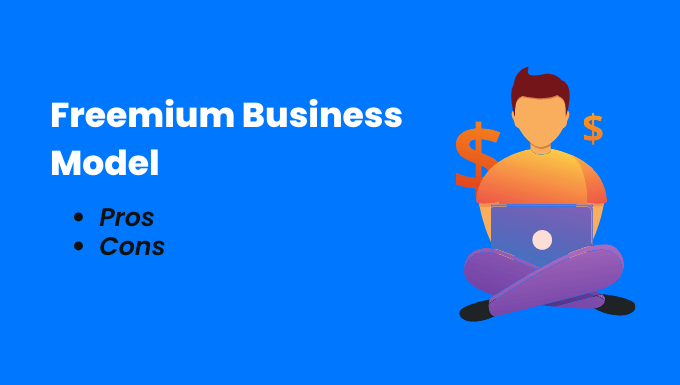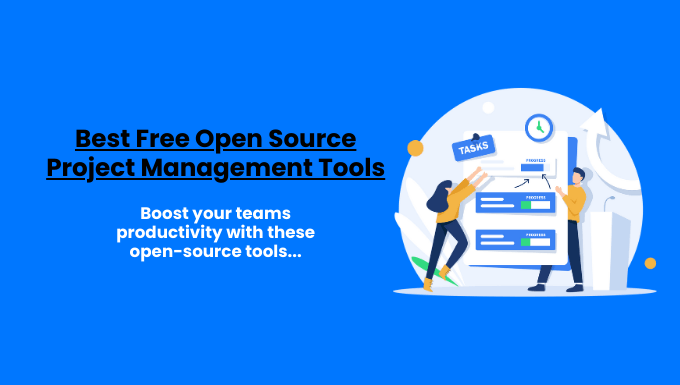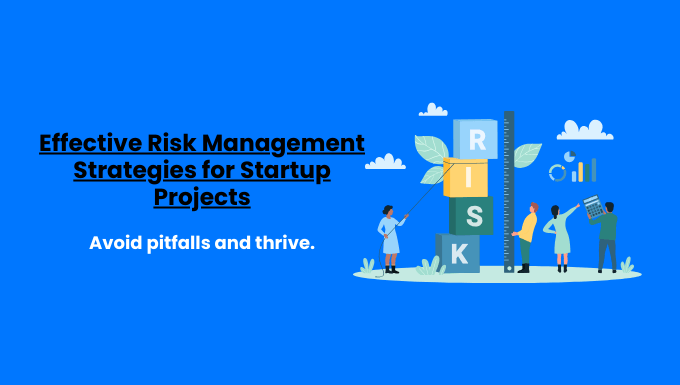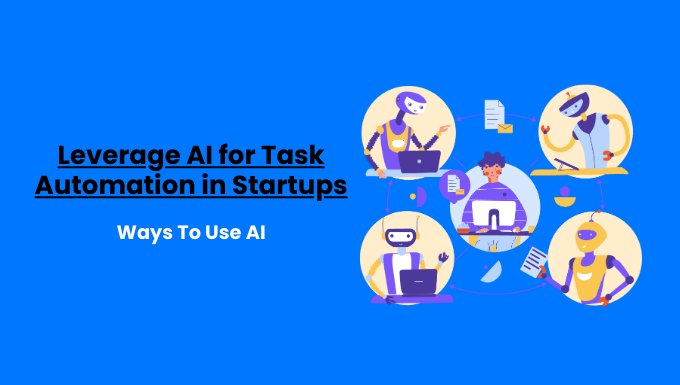Imagine offering your product for free and still making money. That’s the magic of the freemium business model.
This innovative approach lets businesses attract users with free features while enticing them to upgrade for premium perks.
This approach has its unique advantages and challenges.
Discover how industry giants like Spotify and Dropbox leverage freemium strategies to skyrocket their growth and revenue.
Dive into the pros and cons of freemium to determine if this powerful model could transform your business success.
Key Takeaways:
- Freemium combines free basic services with paid premium features.
- Pros: Low entry barrier, viral marketing, upselling opportunities.
- Cons: Sustainability concerns, perceived value issues, resource-intensive.
- Successful implementation requires strategic feature selection and marketing.
- Companies like Slack, Spotify, and LinkedIn effectively use the freemium model.

Contents
ToggleUnderstanding the Freemium Business Model
What Is the Freemium Business Model?
Ever heard of a business model that’s like getting a free sample of ice cream but having to pay for the toppings?
That’s the essence of the Freemium model – a clever blend of “free” and “premium.”
In this setup, companies offer basic features of their product or service for free, enticing users to upgrade to a premium version with extra bells and whistles.
Breaking Down the Freemium Model
Imagine walking into a candy store where the owner gives you a tiny piece of chocolate for free but charges for the whole bar.
That’s the Freemium model in action.
Companies using this approach provide a taste of their services at no cost, often in the form of a free trial or a stripped-down version, while dangling the premium features like a carrot on a stick.
How it Works in Digital Services or Software Businesses
In the digital realm, the Freemium model is the rockstar of software applications and online businesses.
Picture this: you download a cool app for free, but to unlock its full potential, you gotta shell out some cash.
This is a common tactic app developers use to entice users into choosing premium subscriptions.
It’s like getting a sneak peek behind the curtain and then deciding if you want the VIP treatment, a stratagem to encourage people to pay for more exclusive services.
Why Freemium Works Like Magic?
The beauty of the Freemium model lies in its ability to reel in a massive user base without scaring them off with upfront costs.
It’s like throwing a party where everyone’s invited, but the VIP lounge is reserved for those willing to pay for the premium experience.
This strategy not only boosts brand awareness but also converts curious users into paying customers.
Pros of Using the Freemium Business Model
In the realm of business strategies, the freemium model stands out as a game-changer, offering a plethora of benefits for savvy entrepreneurs looking to scale their ventures with this business model all the way.
Let’s dive into the world of freemium and explore why it’s a winning formula for business success.
1. Low Barrier to Entry for Users
Imagine a world where users can experience your product or service without any financial commitment.
The freemium model allows users to take a test drive without shelling out a single penny. Just like offering free samples at a grocery store, this approach entices users to explore further.
For instance, Grammarly offers basic grammar and spell checks for free, attracting users who may later opt for premium features.
2. Viral Marketing Advantage
Picture this: your free users becoming unpaid brand ambassadors, spreading the word about your product like wildfire. This is the magic of viral marketing in action.
Spotify effectively utilizes this strategy by offering a free, ad-supported version of their music streaming service.
Users share their favorite playlists and songs on social media, inadvertently promoting Spotify to their circle of friends and showcasing the benefits of both the free tier and the opportunity to upgrade to the paid version.
It’s like having an army of promoters working round the clock for you – a marketer’s dream, especially when leveraging a successful freemium strategy to spread the word.
3. Opportunity for Upselling and Cross-selling
With a large user base engaged with your free offering, upselling and cross-selling opportunities abound.
Dropbox, for instance, provides basic cloud storage for free but with limitations, leveraging this to encourage users to use the free version before considering an upgrade.
Users needing more space or enhanced sharing options can seamlessly upgrade to a paid plan.
It’s akin to offering a taste of heaven and then tempting users to indulge in the whole dessert – irresistible and a method to motivate people to pay for the full experience.
4. Gathering Valuable User Data
Data is the new gold in the digital age, and the freemium model serves as a treasure trove of user insights.
Platforms like LinkedIn offer basic access for free, enabling them to gather valuable data on user behavior and preferences.
This data is crucial for app developers to fine-tune their strategies for converting users to premium plans. This data-driven approach fuels product development and sharpens marketing strategies, making the model particularly effective in a competitive market.
For example, premium features like knowing who viewed your LinkedIn profile provide insights to tailor offerings accordingly.
Cons Of Using the Freemium Business Model
1. Sustainability Concerns
The freemium model, with its allure of attracting a large user base, can lead to sustainability concerns.
Converting free users into paying customers poses a significant challenge, but it is essential for the sustainability of a successful freemium strategy.
The low conversion rate is a significant hurdle that companies have to overcome.
Picture this scenario: the revenue from paying customers may not cover the costs of providing services to free users, potentially leading to financial instability if not managed carefully.
2. Perceived Value Issues
A major drawback of the freemium model is perceived value issues, which can deter free users from seeing the need to upgrade.
When too much is offered for free, users may undervalue the service or product.
This can complicate the pricing and positioning of premium features.
Striking the right balance between free offerings and premium upgrades is vital for a sustainable business model and to ensure users see the value of your product and feel the need to upgrade.
3. Resource Intensive
Entering the freemium realm requires a substantial upfront investment in product or service development.
Sustaining a freemium model necessitates ongoing development and support for a potentially large user base, including both free and paying customers.
This resource-intensive nature can strain startups and small businesses, demanding meticulous resource planning and allocation.
4. Freeloaders
Enter the freeloaders – non-paying users who enjoy freebies without converting into paying customers, underscoring one of the cons of the freemium business.
Despite this, many freemium models successfully navigate this challenge by giving users enough time to see the full product’s value.
Managing these freeloaders can be challenging, but it’s part of a broader pricing strategy that allows SaaS companies to first entice users with a freemium plan before converting them into paying customers.
While attracting genuine customers is the goal, preventing freeloaders from draining resources excessively is crucial, especially in maintaining a sustainable pricing strategy for SaaS companies.
Implementing effective strategies to encourage conversion while managing freeloaders is key to maintaining a healthy freemium model, a challenge in every business that adopts it.
Benefits of a Freemium Business Model
1. Faster User Acquisition
The freemium model acts as a powerful magnet, effortlessly drawing in a diverse user base.
It’s akin to offering a free sample at a grocery store – enticing users to try before committing, which is the essence of the freemium plan in enticing users to eventually commit to the paid version and help grow your business.
Take Spotify, for instance. Many freemium services struggle with the balance of what to offer for free versus premium, but Spotify has managed to strike a good balance.
Their free, ad-supported version attracts a wide range of users who may not be ready to opt for a paid subscription just yet.
2. Built-in Upsell Opportunities
The allure of the freemium model lies not only in offering something for free but in enticing a portion of those free users to upgrade to the premium version with its irresistible features.
Dropbox executes this strategy flawlessly by providing basic cloud storage for free but with limitations, nudging users to upgrade to the paid version for additional space and capabilities, thus embodying a successful freemium strategy.
Looking for more space and enhanced sharing options? Upgrade to the paid version for a more comprehensive solution to your needs, showcasing the upgrade path from the free tier.
Upgrade to the paid plan!
3. Easier Beta Testing
One of the advantages of the freemium model is the invaluable opportunity it provides for beta testing.
By offering basic features for free and gradually introducing advanced services, businesses can cultivate relationships with customers and refine their premium features based on user feedback, solidifying the success of the freemium pricing model.
Trello, the task management solution, excels in this aspect by offering basic features for free and enhancing its premium features based on user engagement and feedback.
4. Further Monetization Opportunities
The freemium model excels in generating revenue from both free and premium user segments, being a cornerstone pricing strategy for growth among SaaS companies and aiding in expanding the customer base.
Users can enjoy basic features for free and opt to pay for upgrades to enrich their experience, demonstrating the freemium pricing model’s effectiveness in enticing users to see the value of your product and the need to upgrade.
LinkedIn adeptly leverages this strategy by providing basic access for free while enticing users with deeper insights through their premium subscription, such as knowing who views their profile, and encouraging them to upgrade to a paid version.
They grow their business by encouraging users to upgrade to the paid version for more comprehensive features.
Implementing a Successful Freemium Model
When delving into the realm of freemium models, it’s crucial to navigate with care.
The key to triumph lies in discerning which features to offer for free and which to reserve for premium users.
This strategy maximizes the chances of converting free users into paying customers in the freemium business model.
Take Dropbox, for instance.
They provide basic cloud storage for free, albeit with a limit, enticing users to use the free version initially.
This freemium tactic is a clever way to monetize by eventually encouraging users to opt for more storage through premium upgrades.
Should users desire more space and enhanced sharing options, the premium plan awaits.
Criteria for Deciding What’s Free vs. Premium
Balancing value is essential to ensure free users have a positive experience while being incentivized to upgrade. It’s akin to a delicate dance in the freemium landscape.
Crafting a free version that can stand alone, enticing users while leaving them yearning for more is the art.
Consider Grammarly, offering basic grammar checks for free, a quintessential example of a successful freemium product.
However, for robust grammar fixing and plagiarism checks, one must unlock the premium treasure trove.
Balancing Value to Ensure Free Users Have a Good Experience but Are Incentivized to Upgrade
In the freemium world, strategic marketing is the secret ingredient to converting users from a free product to a premium service.
Imagine LinkedIn, granting basic access for free, an approach to attract new users.
Yet, for those seeking deeper insights like profile visitors, the premium subscription reveals hidden gems.
The crux lies in seamless and persuasive communication, guiding users toward the premium promised land.
Strategic Communication and Marketing to Encourage Conversion
In the freemium landscape, strategic marketing is the secret sauce. Picture LinkedIn, providing basic access for free.
This freemium approach allows them to gather invaluable data on user behavior and preferences, which can be critical in optimizing the chances of converting free users to paid.
This exemplifies how freemium is a business model designed to give users essential services at no cost while offering more advanced features for a fee, aiming to build brand awareness and encourage upgrades.
Yet, for those hungry for deeper insights like profile visitors, the premium subscription unveils the hidden gems.
The key lies in seamless and persuasive communication, guiding users towards the premium promised land.
11 Companies With an Effective Freemium Business Model
1. Slack: Revolutionizing Communication with Freemium
Slack, the go-to communication tool for businesses, has mastered the art of the freemium model.
Offering basic features for This strategy has propelled Slack to success, boasting over 12 million daily active users worldwide, many of whom start on the free tier and then convert to premium accounts as part of their growth strategy.
2. Spotify: Making Music Accessible to All
Spotify, the music streaming giant, has embraced the freemium model by providing a free, ad-supported version of its service alongside a premium subscription option.
This approach has allowed Spotify to attract a massive user base of over 345 million active users, with 155 million paying subscribers.
The freemium model here is complemented by giving users enough time to experience the value of premium.
By offering a taste of their premium features for free, Spotify hooks users and encourages them to upgrade for an ad-free experience and additional perks.
3. Mailchimp: Email Marketing Made Easy
Mailchimp, a leading email marketing platform, offers a freemium model where users can access basic email marketing features for free.
As businesses grow, they can opt for premium plans to unlock advanced automation, segmentation, and analytics tools.
This strategy has helped Mailchimp amass a user base of over 14 million customers, making it a powerhouse in the email marketing industry through its freemium product.
4. WordPress: Empowering Websites Everywhere
WordPress, the popular website-building platform, follows a freemium model by providing a free basic version for users to create websites.
This initial free access is a strategic move to give users enough time to evaluate the product before deciding to upgrade for advanced features.
For those seeking more customization options and advanced features, WordPress offers premium themes, plugins, and hosting services.
With over 455 million websites powered by WordPress, their freemium strategy, which can be seen as a pivotal pricing strategy for many SaaS companies, has proven to be a winning formula.
5. Service Bell: Elevating Customer Service
Service Bell, a customer service software, operates on a freemium model similar to Slack and Mailchimp.
By offering essential customer service features for free, such as ticketing and live chat, Service Bell attracts users who later upgrade to premium features like chatbots and advanced reporting.
This approach has helped Service Bell carve a niche in the competitive customer service industry with its freemium version.
6. Zoom: Connecting the World, One Video Call at a Time
Zoom, the video conferencing platform that skyrocketed to fame during the pandemic, utilizes a freemium model to cater to users’ varying needs.
With free basic video conferencing services, Zoom has amassed millions of users worldwide. Businesses and organizations looking for additional features like increased participant limits and cloud recording can opt for premium plans, expanding the potential customer base.
Zoom’s freemium strategy has cemented its position as a leader in the video communication space, appealing to a wide range of potential customers.
7. LinkedIn: Networking Redefined
LinkedIn, the professional networking platform, offers basic features for free to users looking to connect and engage with professionals in their industry.
For those seeking advanced features like InMail messaging and expanded profile views, LinkedIn offers premium subscriptions.
With over 740 million members, LinkedIn’s freemium model has transformed the way professionals network and build relationships.
8. Evernote: Organizing Ideas, One Note at a Time
Evernote, the note-taking app, operates on a freemium model by providing core features like note syncing and organization for a free account while enticing users to upgrade for more advanced features.
Users can upgrade to premium plans for additional features such as offline access and increased storage.
This way of monetizing apps has proven effective for many freemium services by enticing users to opt for the full product experience.
With over 225 million users worldwide, Evernote’s freemium approach has made it a staple for individuals and businesses looking to stay organized and productive.
9. Grammarly: Polishing Your Writing Skills
Grammarly, the writing assistant tool, offers essential grammar and spell-checking features for free to users.
Premium subscribers gain access to advanced writing suggestions, plagiarism detection, and style enhancements.
With over 30 million daily active users, Grammarly’s freemium model has positioned it as a must-have tool for anyone looking to improve their writing skills and enhance their communication.
10. Dropbox: Simplifying File Storage
Dropbox, the cloud storage service, provides basic file storage and sharing features for free to users, attracting new users and potential customers, thereby using the freemium pricing model to build brand awareness.
Premium plans offer additional storage space, advanced collaboration tools, and enhanced security features.
With over 600 million registered users, Dropbox’s freemium strategy has made it a go-to solution for individuals and businesses looking to streamline their file management.
11. Canva: Unleashing Creativity with Freemium
Canva, the graphic design platform, offers a user-friendly interface and basic design tools for free, laying the groundwork for users to eventually see the value in upgrading to the premium, paid version.
Users can upgrade to premium plans for access to a wider range of templates, images, and design elements.
With over 60 million active users, Canva’s freemium model has democratized design and empowered individuals and businesses to create stunning visuals effortlessly.
People Also Asked
1. What is The Difference Between Freemium and Free Trials?
Wondering about the distinction between freemium and free trials?
Let’s break down the pros and cons of the freemium business model, highlighting the challenges of converting free users into paying customers and ways app developers strive to increase those chances.
With freemium, you offer certain services for free, but if users want access to premium features, they need to pay up. For instance, consider Breadcrumbs.
They allow you to explore the basics for free, but unlocking all the advanced features requires a payment.
On the other hand, a free trial provides users with a glimpse of the premium features for a limited period, often leading them to upgrade to the paid version after experiencing the added value.
Once the trial ends, users must subscribe to continue enjoying the services.
2. How to Convert Freemium Users to Paid Subscribers?
You’ve amassed a group of freemium users, and now you’re eager to convert them into paying customers.
How can you achieve this and grow your business?
Here are some effective strategies to entice those free users to become subscribers:
- Showcase Limited Free Plan Features: Highlight the premium features they’re missing out on.
- Implement Tiered Pricing: Offer different subscription options to cater to diverse preferences.
- Provide Exceptional Customer Support: Building a rapport with users can encourage them to invest in your services, turning those who use the free version into premium subscribers.
- Create a Sense of Urgency: Utilize limited-time offers to prompt action.
- Offer an Ad-Free Experience: Eliminate ads by upgrading to a paid plan, a common tactic in the freemium pricing model.
3. How does Spotify use the freemium business model?
Ever wondered how Spotify excels with the freemium model?
They offer a free version with ads and restricted features, alongside a premium version with full functionality, aiming to broaden their customer base through the freemium pricing model.
Surprisingly, 91% of their revenue stems from subscriptions, showcasing the financial viability of a freemium pricing model when many freemium users convert to paying customers.
4. What is the typical conversion rate from free to paid users in a freemium model?
In the world of freemium, conversion rates typically range from 1% to 10%, with optimal rates falling between 2% to 5%.
If you’re achieving conversions within this range, you’re on the right track!
5. Why do companies use the freemium model?
Companies embrace the freemium model to reduce their customer acquisition costs (CAC).
By providing a taste of their product for free, they attract a wider audience while maintaining a cost-effective marketing strategy.
6. Is freemium a viable business model for SaaS?
Can the freemium model work wonders for SaaS businesses?
Absolutely!
When executed effectively, it can swiftly transition free users into paying customers, boosting cash flow.
Success hinges on factors like product-market fit, market dynamics, and flawless execution.







